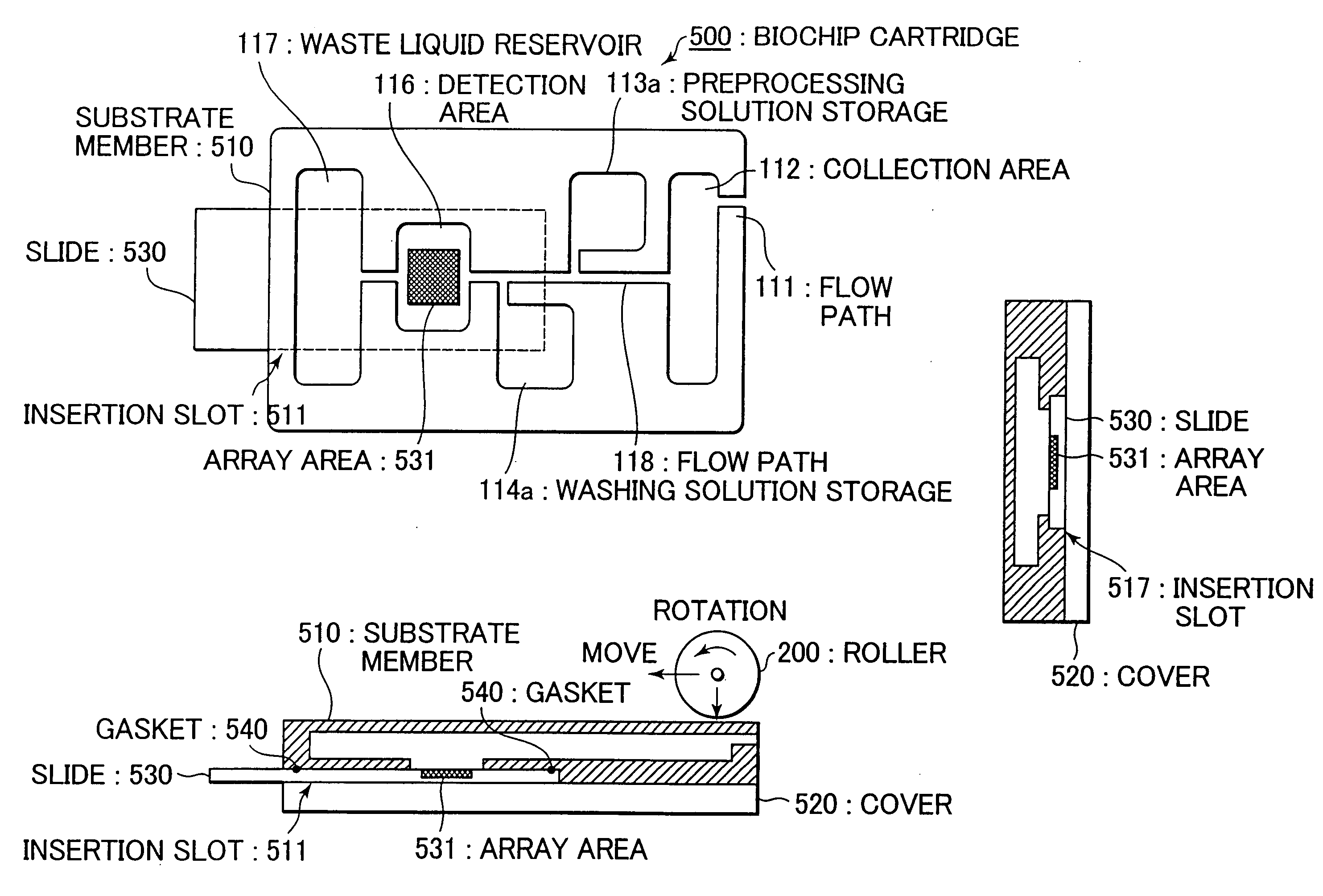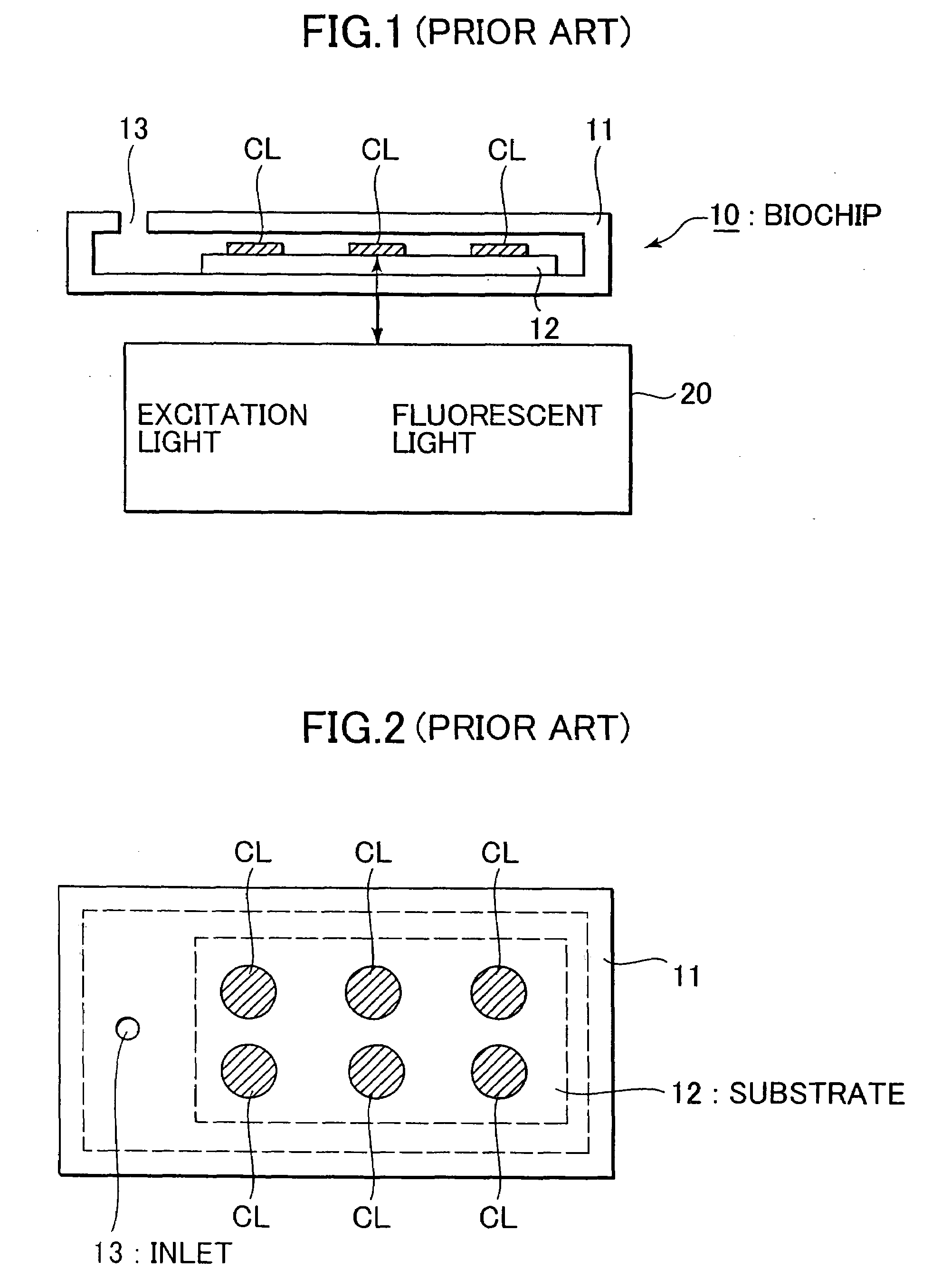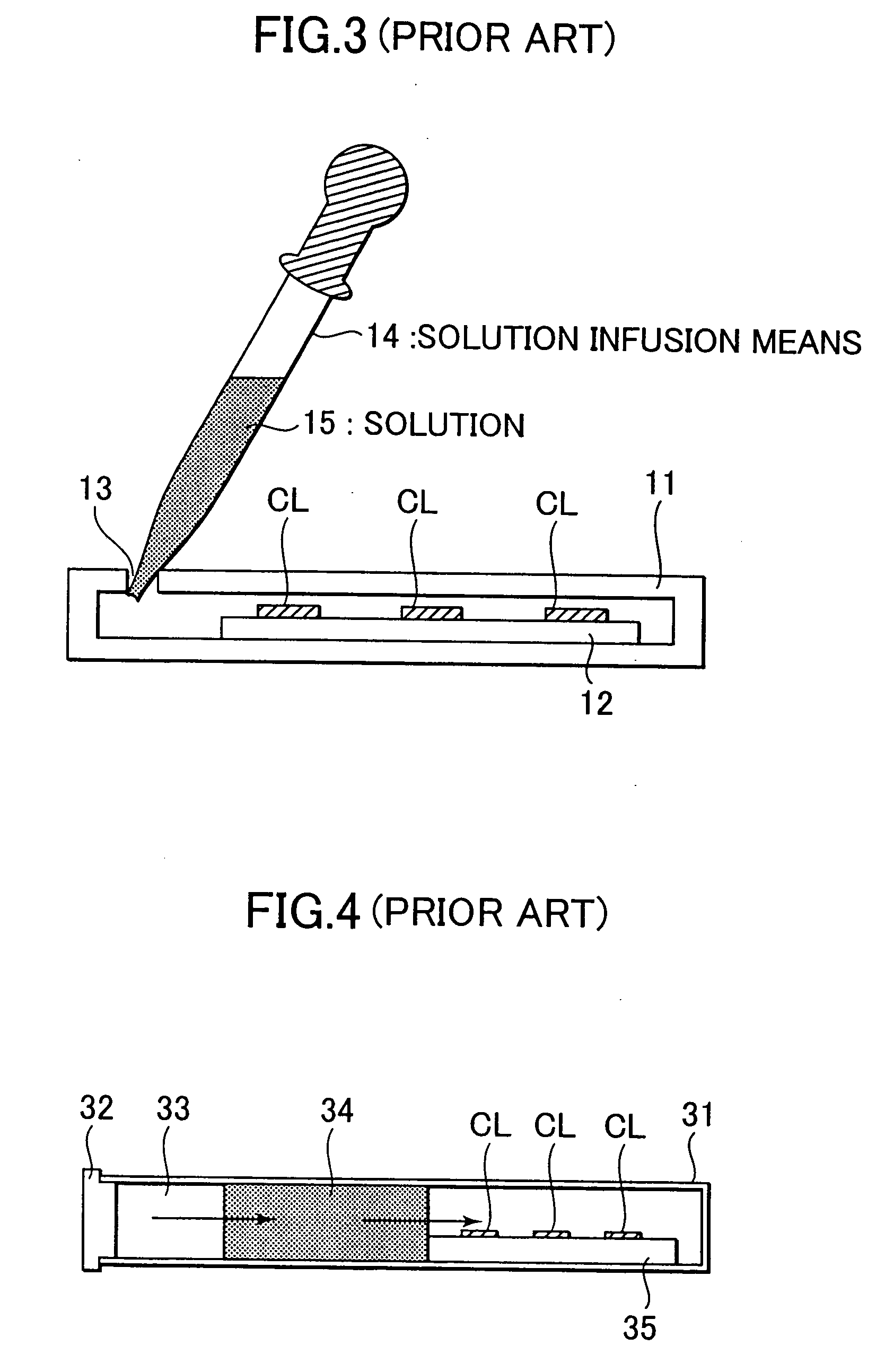Biochip cartridge
a technology of biochips and cartridges, applied in the field of biochip cartridges, can solve the problems of increased testing cost, increased risk, and increased risk of operator being infected with a virus, and achieve the effect of preventing the danger of the operator accidentally coming into contact and low self-fluorescen
- Summary
- Abstract
- Description
- Claims
- Application Information
AI Technical Summary
Benefits of technology
Problems solved by technology
Method used
Image
Examples
Embodiment Construction
[0065]Preferred embodiments are described in detail hereinafter by referring to the accompanying drawings, wherein FIG. 7 is a schematic view illustrating one embodiment of the biochip cartridge in accordance with the present invention. FIG. 7(a) is a side view, FIG. 7 (b) is the plan view of a substrate member, and FIG. 7(c) is the view of section A-A′ (including covers).
[0066]In biochip cartridge 100 illustrated in FIG. 7(a), symbols 101 and 102 indicate transparent and flexible covers made from hard plastics and symbol 110 indicates a substrate member formed using an elastic body, such as airtight, elastic rubber. Covers 101 and 102 are hermetically attached onto the top and bottom surfaces of substrate member 110 by means of, for example, adhesion.
[0067]Formed on substrate member 110 are a through-hole for flow path 111 at the inlet of the substrate member, a plurality of chambers, i.e., collection area 112, first and second pockets 113 and 114, preprocessing area 115, detection...
PUM
| Property | Measurement | Unit |
|---|---|---|
| size | aaaaa | aaaaa |
| size | aaaaa | aaaaa |
| size | aaaaa | aaaaa |
Abstract
Description
Claims
Application Information
 Login to View More
Login to View More - R&D
- Intellectual Property
- Life Sciences
- Materials
- Tech Scout
- Unparalleled Data Quality
- Higher Quality Content
- 60% Fewer Hallucinations
Browse by: Latest US Patents, China's latest patents, Technical Efficacy Thesaurus, Application Domain, Technology Topic, Popular Technical Reports.
© 2025 PatSnap. All rights reserved.Legal|Privacy policy|Modern Slavery Act Transparency Statement|Sitemap|About US| Contact US: help@patsnap.com



